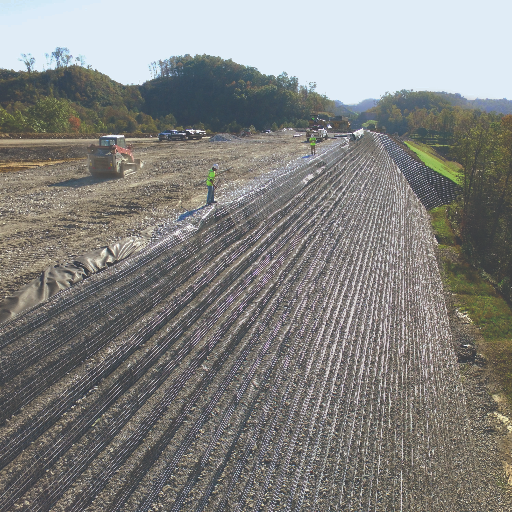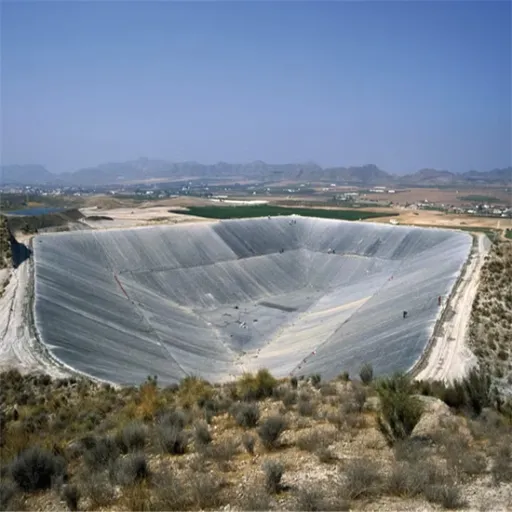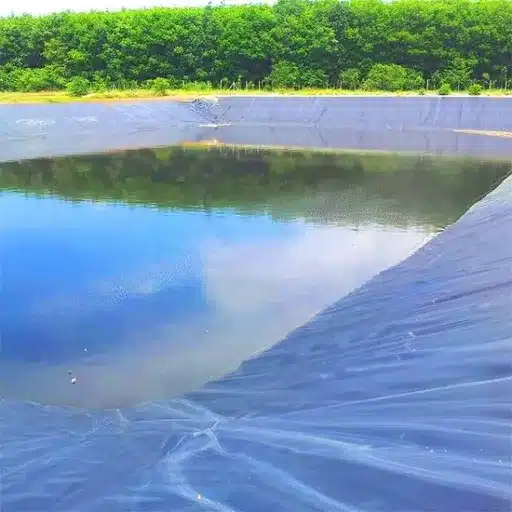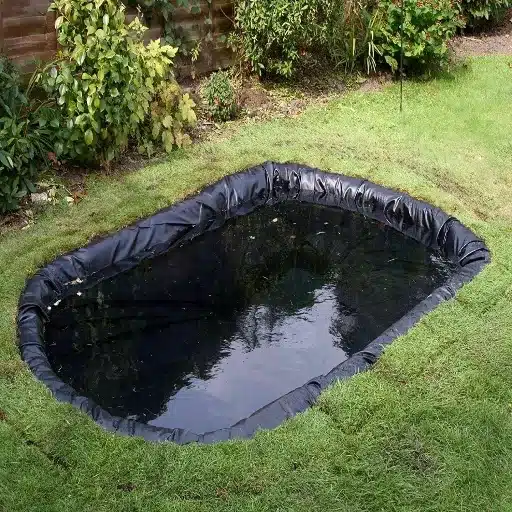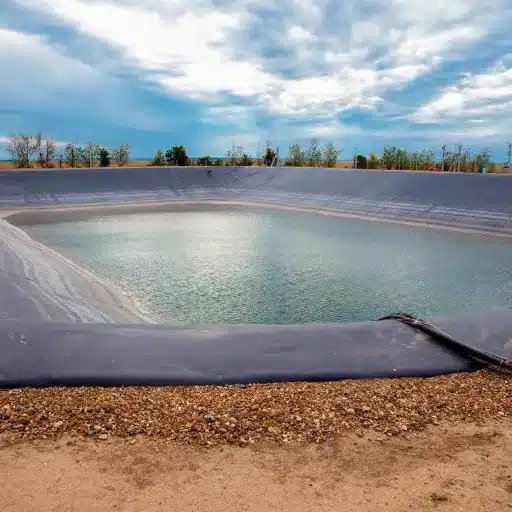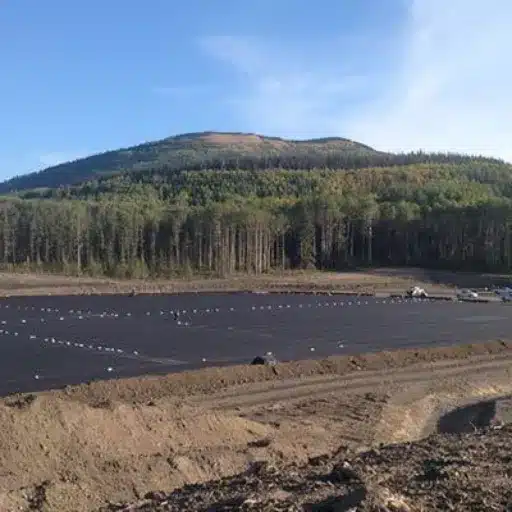In landscape stabilization and difficult terrain management, scrupulous criteria for reinforced soil slopes and retaining walls are given to ensure engineering solutions from the zenith. Such innovative engineering treatments provide support against soil erosion and instability, while at the same time allowing constructive use of land in both the urban and rural environments. If you are an established working professional in construction and landscaping or just a curious soul wishing to know about the latest infrastructure developments, this article will walk you through the basics, benefits, and uses of these structures. So stay with us while we discover the science behind these resilient designs for sustainable and safe development.
Introducing Reinforced Soil
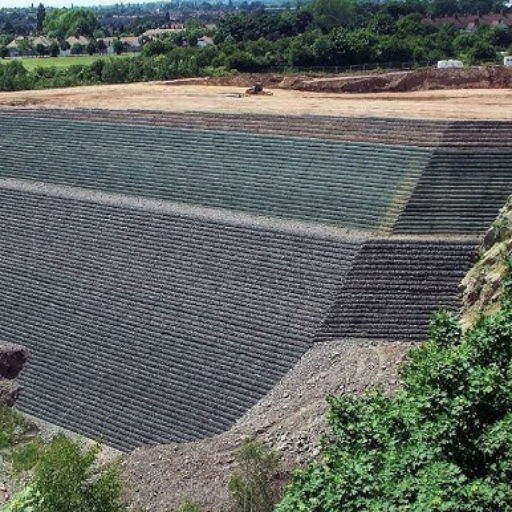
One gets to reinforce the soil in this method with materials such as geosynthetics or for that matter metallic strips in order to improve its strength and stability. In doing so, the technique ensures that the soil is capable of bearing loads, erosion attenuation, and creation of strong retaining walls, slopes, and any other varying structure. It has found its way into infrastructure projects due to its low cost, versatility, and green nature.
What Is Reinforced Soil?
Reinforced soil is an advanced form of geotechnical engineering wherein soil is combined with some reinforcement material to improve mechanical properties. The reinforcement materials: be they geosynthetics, metal strips, or grids-bear greater loads along with the soil; such reinforcement resists deformation and ensures structural integrity. The concept has arisen from an attempt to utilize the soil’s natural strength while compensating for its weak tensile properties.
The technique finds wide application in retaining walls, steep slopes, bridge abutments, and roadway reinforcement. Data also shows that geosynthetics are among the most popular materials used because they are easy to install, durable, and cost-effective. It is said that reinforced soil retaining wall systems reduce project costs by 30–50% over conventional concrete retaining walls, while still providing a similar structural performance.
Reinforced soil technology is also in line with sustainable development. By using soil locally and minimizing traditional materials such as concrete or mortar, it minimizes the carbon emissions of any construction project. Reinforced soil systems have successfully provided resistance to environmental factors such as earthquakes and changes in climatic conditions, with select systems able to withstand seismic loading of above 5.0 on the Richter scale.
Further developments with high-strength geogrids and synthetic reinforcements keep enlarging the sphere of fulfillment of reinforced soil across various fields, including infrastructure development and disaster mitigation.
Advantages of Reinforced Soil in Construction
Having innumerable advantages, reinforced soil answers the demands of modern construction, especially sustainability, cost-efficient measures, and employment. As stated in recent industry reports, it has been established that the incorporation of newer-generation geosynthetic materials such as polymeric geogrids has increased the load-bearing capacity of retaining walls and embankments by about 50% and thus lessened the use of traditional building materials such as cement and steel in the construction.
Furthermore, these reinforced soil systems have exhibited excellent behavior in the seismic intensity zone. It has been found that reinforced soil structure has 40% more chances of survival against high-magnitude earthquake than those of conventional ones by effectively dissipating the seismic energy. For example, the durability and stability of the Seville Highway in Spain against soil erosion were significantly enhanced by using reinforced soil.
The system of reinforced soil helps provide answers to construing steep slopes, retaining walls, and even bridge abutments because of its high flexibility and adaptability. Research studies have revealed its use in the most complex terrains where traditional methods fail due to soil instability or lack of access. For example, stiffened soil technology was used for the construction of railways in the Himalayan region, thereby ensuring stability in an area subject to heavy rainfall and frequent landslides.
By integrating state-of-the-art technology and site-specific design, reinforced soil is reshaping the construction industry, and offering feasible answers to complex engineering problems.
Modern Projects Reinforced Soil Application
Reinforced soil applications have endured sectors that demonstrate the adaptability and efficiency of this method. According to recent reports, reinforced soil structures are commercially deployed to construct retaining walls, bridge abutments, slope stabilization, and highway widening. These applications tackle problems of load-bearing capacity and soil erosion under extreme conditions. An example is a 2023 report, which states that reinforced soil has cut highway project construction costs by 30% compared to traditional retaining structures, while offering increased life expectancy and greater resistance to seismic activity.
With reinforced soil technology being used across urban and rural infrastructure development, projects like India’s Golden Quadrilateral Highway Network and slope stabilization in Japan speak volumes for the potential of reinforced soil to make things safer and soundier. Forecasts show the global market for reinforced soil growing about 6.2% in an annualized rate up to 2030. At that point, innovations such as geosynthetic reinforcements and advanced load optimization models are expected to further lay the groundwork in making this technique ever more feasible and sustainable.
Reinforcement Materials
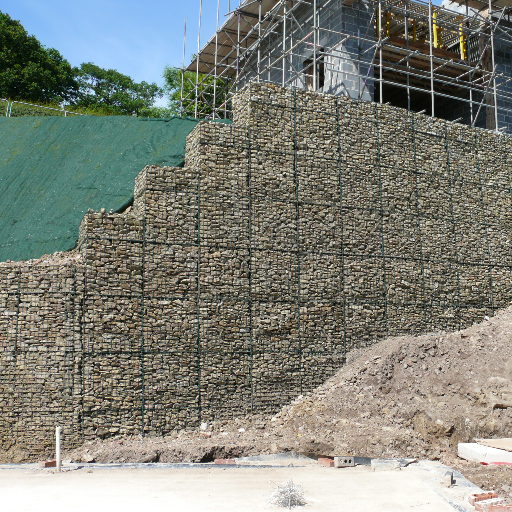
Typically, reinforcement materials cover the range of geosynthetics such as geogrids, geotextiles, and geomembranes, in addition to fiber reinforcement and metallic reinforcement. Selection among these depends on variables including load requirements, soil conditions, and possible environmental constraints.
Geosynthetic Reinforcement
Geosynthetic reinforcement finds major application in civil engineering works like retaining walls, road construction, and slope stabilization. These generally include geogrids, geotextiles, and geomembranes, each having different uses depending on the specific needs.
Geogrids
The prime application of geogrids relates to the improvement of soil stability by load distribution over a larger area. Means of experimental studies declare that geogrids may increase soil bearing capacity up to 30 to 50%, thereby lowering drastically on the direct cost of construction including the cost of materials that are wasted during construction. Also, with production improvements made on biaxial and uniaxial geogrids, the tensile strength has been enhanced so they retain their durability and reliability in highly demanding working environments.
Geotextiles
Geotextiles are used for numerous functions that include filtration, drainage, and separation of soils. It is stated to enhance soil permeability of water by 10 times, thus preventing waterlogging in a soil layer and improving drainage performance. Non-woven geotextiles are best in areas characterized with high-moisture regimes, thus promoting sustainable construction through their development from recycled materials.
Geomembranes
The applications calling for impermeable barriers are the actual applications in which geomembranes have nearly unlimited usage, such as landfill capping and reservoir lining. Modern geomembrane has a lifespan of more than 30 years; made from high-density polyethylene (HDPE) or polyvinyl chloride (PVC), their higher mass also gives them superior resistance to chemical and UV degradation. These features set the geomembrane apart in terms of functionality and longevity in projects where the environment is a concern.
Environmental Aspect
The use of geosynthetics brings a diminution in the carbon footprint of construction because of a lesser need for natural aggregates. According to a report released in 2023, projects with the use of geosynthetics have the potential to lessen material use by as much as 40%, which is in line with world sustainability goals. The categorical reuse combined with the recyclability of some geosynthetics creates another layer of environmental protection.
By combining the latest generation of materials with advances in design and fabrication technology, geosynthetic reinforcements continue to evolve along with modern construction to foster novel solutions for infrastructure that are strong, affordable, and environmentally benign.
Steel Reinforcements
In this modern era, steel reinforcement plays an important role in imparting strength and longevity to large-scale infrastructure projects. Among the most commonly used steel reinforcement types are rebar (reinforcing bars), welded wire fabric (WWF), and structural steel shapes; these act as enhancers to concrete as they greatly profit the tensile strength of structures.
It has also been noted that in recent times, high-strength steel is being used more and more in construction activities. A case in point is Grade 500, as the name implies, with a yield strength of 500 MPa, being widely accepted for use in infrastructure applications due to its higher load-bearing capability and economic benefits. Research suggests that the use of high-strength steels in reinforced concrete design could reduce the steel quantity needed by 20 to 25 percent, thereby directly reducing the raw material cost and carbon footprint.
The sustainable factor of steel has markedly increased by new production processes, for instance, one which contains recycled material. A report dated 2023 indicates that more than 60% of steel production worldwide now contains some recycled material, cutting down considerably on energy usage and greenhouse gas emissions in manufacturing. The technique of production in the case of TMT steel imparts enhanced properties of durability and resistance to environmental stresses, thereby making it more ideal for seismic and physically corrosive conditions.
Thus steel reinforcement, in conjunction with geosynthetics, stands at the forefront for providing solutions toward resilient and sustainable infrastructure, optimizing material use, thereby refocusing their energies on sustainable issues, and ensuring structural performances for the long term through varying environmental conditions.
Comparative Analysis of Reinforcement Materials
Concrete, steel, timber, composites, polymers, and geosynthetics are the primary reinforcement materials.
| Material | Strength | Durability | Eco-Friendly | Cost | Usage |
|---|---|---|---|---|---|
| Concrete | High | High | Moderate | Low | Construction |
| Steel | Very High | Very High | Moderate | High | Bridges, Skyscrapers |
| Timber | Moderate | Low | High | Low | Residential |
| Composites | High | High | High | High | Aerospace, Marine |
| Polymers | Variable | Moderate | Moderate | Variable | Specialized |
| Geosynthetics | Moderate | High | High | Moderate | Foundations, Landfills |
Reinforced Soil Slopes
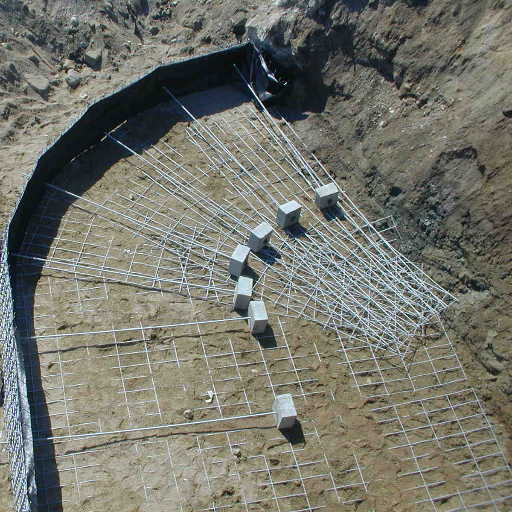
Reinforced soil slopes represent a class of structures in which the soil is stabilized with materials such as geosynthetics including geogrids or geotextiles. The reinforcement materials offer increased soil strength that allows for steeper slopes to be constructed and makes such slopes more stable. Reinforced soil slopes are advantageous because they require less land area than conventional retaining walls; thus, they are more cost-efficient and also are more durable. Common applications include highways, railways, and erosion control.
Designing Reinforced Soil Slopes
Designing reinforced soil slopes includes analysis and planning to ensure stability over time, and choosing materials. The factors that are taken into account in the design process include soil properties, slope geometry, reinforcement materials, and environmental conditions.
- Soil Characteristics:
The stability of the slope is influenced appreciably by the soil chosen. Cohesive soils, such as clay, differ from coarse-grained soils such as sand and gravel in shear strength and drainage properties. Soil testing for parameters such as cohesion, angle of internal friction, and unit weight must be conducted prior to commencing any design.
- Slope Geometry:
The height and inclination angle of the slope are important. Steeper slopes require more robust reinforcement and critical design to prevent failure. Generally, angles ranging between 45° and 70° tend to be common for reinforced slopes. Stability analyses, including limit equilibrium analysis and finite element analysis, are employed to arrive at the most optimal geometry and safety factor.
- Reinforcement materials:
The geosynthetic materials, such as geogrids, geotextiles, and geocells, are commonly used. Geogrids are more popular due to their high tensile strength and ability to effectively distribute loads. These geogrids are laid within the soils at predetermined intervals. More advanced materials with better durability and chemical resistance are used for expected longer lifetimes in harsher environmental conditions.
- Drainage system:
Drainage must be sufficient to keep stability, as retained water can increase pore pressure, leading to failure. The system may include drainage layers and pipes, perforated pipes, trench drains, etc., to divert water away from the structure.
- The design Standards and data:
The most recent design guidelines, such as those published by the Federal Highway Administration (FHWA) in the USA, outline minimum safety factors and testing requirements. Usually, a safety factor of 1.3 to 1.5 is taken. The tensile strength of reinforcement materials is generally within the range of 20 kN/m to more than 200 kN/m, depending on site-specific requirements for design.
- Construction Aspects:
During construction, the reinforcement materials shall be positioned within the soil at predetermined intervals and directions. Compaction of soil has to be executed with great care to guarantee interaction between soils and reinforcements. Field testing, such as pull-out tests for geogrids, will be helpful to confirm good installation quality.
Challenges and Solutions in Steep Slopes
The construction of steep slopes is fraught with various challenges owing to instability issues, the erosion threat, and a diminishing ability for the structure to maintain integrity with time. Evidence suggests, recently, that steep slopes usually show inclination angles that surpass 45 degrees, thus subjecting soil particles to increased gravitational forces that warrant advanced engineering interventions as a pre-emptive measure against slope failure.
General Solutions and Recent Updates
Reinforced Soil Structures:
Modern reinforced soil techniques use geosynthetics, mainly geogrids, and geotextiles, to stabilize steep slopes. The strength of geogrids is developed to become more than 500 kN/m to accommodate high-stress levels in critical infrastructure projects.
Drainage Systems:
A well-designed drainage system is a must to reduce water infiltration into the slope as water infiltration is one of the main causes of slope instability. The recent data show that a slope design with subsurface drainage layers can reduce failure risk by 60%.
Vegetative Cover:
For vegetative cover, it is a green solution where the plant roots bind soil particles and curb surface erosion. Certain types of plants like vetiver grass can enhance slope stability by enhancing shear strength by 30-50%.
Retaining Structures:
Another common approach is to install retaining walls or mechanically stabilized earth walls. Recent case studies have demonstrated that reinforced retaining walls can resist lateral loads of up to 150 kPa, making them ideal for slopes under heavy loading.
Slope Monitoring Technologies:
Advanced slope monitoring systems that incorporate LiDAR and strain gauges in real-time observation are widely deployed nowadays; this allows for a 25% improvement in predictive modeling accuracy.
Together, these methods combined with new materials and monitoring techniques ensure the stabilization of steep slopes, for the safety and longevity of infrastructure projects.
Successful Reinforced Soil Slopes: A Few Case Studies
Reinforced soil slope stabilization has witnessed multiple successful endeavors all around the globe, yielding proofs of reliability and adaptability. A well-known example stretches from the Kalikottu-Wayanad Highway, India, where geogrid reinforcement was implemented for a 60 m high slope. Post-construction surveys confirmed that the slopes remained deformation and movement-free, even after enormous monsoonal downpour, establishing the reinforced system’s durability.
Another well-known case occurred in the Mingzhu Interchange Project in Shenzhen, China, where high-strength geosynthetic reinforcements were employed to stabilize a 45-meter-tall slope, reducing the construction period by 30% compared with the traditional retaining walls. On-site installed monitoring systems showed minimal deflections, thus confirming the structural integrity attained by those geogrid layers.
More recent achievements and developments are looked forward to through the National Cooperative Highway Research Program (NCHRP) Research, which shows that geogrid-reinforced soil slopes report on average a 40% reduction in maintenance costs relative to conventional options over a course of 10 years. By integrating LiDAR and automated registers of stress, engineers can further enhance slope stability by optimization of reinforcement placement and load distribution.
Introduction to slope management is being transformed with the integration of new materials and real-time monitoring systems, offering data-informed perspectives to guarantee safety and long-term reliability in infrastructural development.
Reinforced Soil Retaining Walls
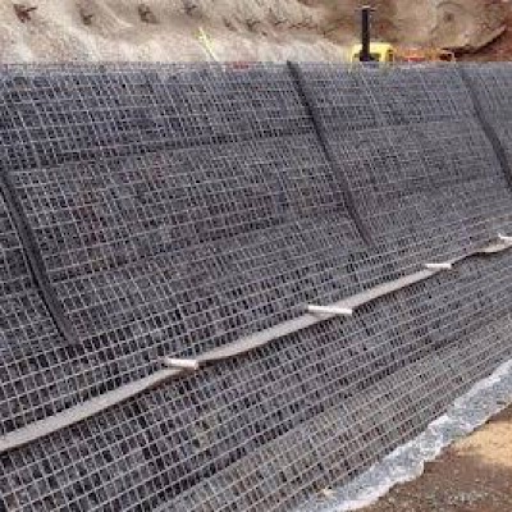
The reinforced soil retaining walls design acts to stabilize the soil to prevent erosion or collapse, especially where there is a difference in elevation. Structurally, these walls integrate soil with reinforcing elements, such as geogrids, steel strips, or polymeric sheets, to improve strength and load-bearing capacity. They are inexpensive, flexible with respect to site conditions, and are commonly constructed as part of infrastructure works such as highways, railways, and landscaping. They are designed in such a way that further ages to support the slopes and retaining soil systems.
Types of Reinforced Soil Retaining Walls
Reinforced soil retaining walls are classified into four main types: mechanically stabilized earth (MSE) walls, reinforced soil slopes (RSS), segmental retaining walls (SRW), and hybrid reinforced soil walls.
| Type | Key Features | Materials | Uses |
|---|---|---|---|
| MSE Walls | Stable, Durable | Geogrids, Steel | Highways, Bridges |
| RSS | Gradual Slopes | Geogrids, Sheets | Landscapes |
| SRW | Precast Units | Concrete Blocks | Gardens, Roads |
| Hybrid Walls | Combined Design | Multiple Types | Complex Sites |
Geosynthetic Reinforced Soil (GRS) Walls
Geosynthetic Reinforced Soil (GRS) walls are retaining walls that use layers of geosynthetic reinforcement to stabilize soils and improve the load-bearing capacity of the site. GRS walls have became popular now for their cost-effectiveness, simplicity of construction, and performance in various service environments.
Key Features
Flexibility: GRS walls can accommodate minor movements and adjust to settlement better than rigid structures like concrete walls.
Economical: Construction takes less time and uses fewer materials than most traditional retaining-wall technique.
Versatility: GRS walls are adaptable to most site conditions, such as those under bridges, abutments, or retaining structures near slopes.
Materials Used
Geosynthetics: Reinforcement and tensile strength in the soil are obtained by such main components as geotextiles or geogrids.
Backfill: A well-compacted granular soil is used, permitting stability and drainage.
Facing elements: Could range from modular concrete blocks to natural stone or anything considered appropriate to the taste of the client.
Applications
Infrastructure Projects: Common applications include bridge abutments, roadway retaining walls, and railways.
Temporary Structures: Quick, suitable for temporary retaining systems likely to be dismantled later.
Steep Slopes and Landscaping: GRS systems are suited to hold the steep slopes of landscaping or urban infrastructure.
Advantages of Reinforced Soil Retaining Walls
Reinforced Soil Retaining Walls offer an excellent advantage, which has made them popular for contemporary development projects. Let us try and assess these advantages based on recent data and trends:
Cost Effective: It has been shown through research conducted that reinforced soil retaining walls could reduce construction costs of up to 30% versus conventional concrete walls due to lesser material requirements and faster installation times.
More Durable: When correctly designed and constructed according to engineering standards, these walls are known to last over 75 years, providing long-term stability with very little maintenance.
Flexible and Adaptable: These walls are ideal for varied terrains and seismic zones. Being flexible, they fare better than rigid walls withstanding differential settlement and the realization of an earthquake.
Environmentally Friendly Solutions: Reinforced soil walls use materials that include geosynthetics and natural aggregates that allow for sustainability concerning fewer uses of non-renewable resources. Studies from environmental agencies show that they also help in lowering the carbon footprints of construction projects.
High Structural Performance: Modern reinforced soil systems can be built for heights over 30 m and under considerable loading for major infrastructural projects such as highways and railways.
Such geo-reinforced walls in recent case studies throughout transport projects in the US have, hence, found their way into urban and rural environments. For instance, the application of reinforced soil concepts reduced construction time by 25% while upholding structural integrity and safety during the I-15 widening project in California.
Soil Strength and Reinforcement
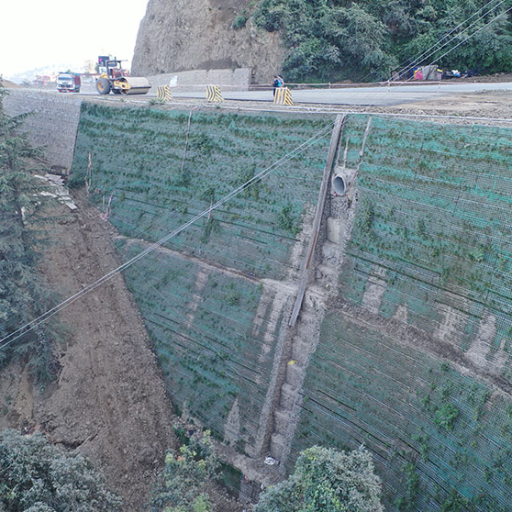
Reinforcing soil means increasing strength and stability by the addition of materials such as geotextiles, geogrids, or natural fibers; these customarily prevent erosion and displacement and distribute loads with equal efficacy among the available options. This becomes very important in supporting structures like retaining walls and slopes that need to remain safe and operational over time.
Understanding Soil Types and Their Implications
Soil characteristics change with their types, and all carry far-reaching implications for construction and landscaping. For instance, the presence of large particles constitutes regular sandy soil, which drains water quickly and helps avert waterlogging but does not do well to retain nutrients. On the other hand, in clay soils, particles are very fine and retain water and nutrients very well but tend to get compacted and may impede structural stability.
Meanwhile, some recent data point out that loam soil, a fine mixture of sand, silt, and clay, is considered the finest soil in construction and agriculture. According to studies, loam is average shear strength, ranging between 25 and 50 kPa, offering medium stability and moister retention on nutrients to foster vegetation and landscaping.
Adding to that, the 2023 report brings into light the need for checking soil pH and organic composition before planning any reinforcement application. Geotextiles, for instance, perform best in soils with a pH range of 5.5–8.0, which pretty much describes most loam and silty soils. Chapter planning with more in-depth soil testing will certainly lead to long life and effective solutions toward the particular soil type.
Soil Strength Enhancements through Reinforcement
In construction, agriculture, and landscaping, especially in investing erosion failures, reinforcement is the solution for strengthening and stabilizing soil. A recent method used in practice is hence the use of geosynthetics, such as geogrids and geotextiles, which augment tensile strength, jointly distributing a load on the soil. According to recent works, geogrids can raise the bearing capacity of soils up to 50%, subject to soil types and arrangements of reinforcement.
Another modern approach is soil stabilization with the addition of lime or cement to carry out a chemical reaction with soil particles, decreasing its plasticity and improving compressive strength. Of particular interest is lime stabilization, which can provide compressive strength improvements of up to 300% in clay soils. Meanwhile, polymers have been introduced as modern stabilizers, providing eco-friendly solutions.
According to data analyzed in a 2023 global report, when the combined techniques of mechanical reinforcement and chemical stabilization are implemented, up to 30% cost savings in large infrastructure projects are achievable over the long-term durability of the works. The possibility to implement combined techniques allows the development of custom solutions given soil types, local conditions, and specific project requirements that guaranty optimized performance and efficient use of resources.
Traditional Soil Stabilization
Stabilization has always been essential in the construction and infrastructure industry. They can be carried out in two different ways: mechanical and chemical, each varying in methodology and outcome. Mechanically stabilizing simply means to alter the soil physically, through compaction or by adding aggregates, minerals, or chemicals, with the intent of providing added bearing capacity to the existing soil. Chemical stabilization makes use of lime, cement, or fly ash-like chemical reagents to alter the particle composition and reduce water content of problems observed in a soil due to less bearing capacity.
Although good, several drawbacks plague these conventional methods. For example, mechanical stabilization may be able to maintain soil condition only for a relatively short time depending on the variability of soil, and thus needs regular maintenance. Chemical stabilization, on the other hand, triggers environmental problems for leaching of chemicals and producing carbon emissions during cement or lime production.
According to a recent global report released in 2023, the combination of traditional and modern methods will successfully increase efficiency and sustainability. The data reveals that hybrid methods that combine mechanical reinforcement with modern chemical treatments can boost soil durability by almost 50% and reduce costs by around 30% for large infrastructure projects. These developments underscore how the modernized approaches to soil stabilization overcome the limitations of their predecessors and take advantage of soil stabilization performance and minimizing its environmental impact through the use of environment-friendly binders, which includes bioenzymes, or industrial waste such as slag and rice husk ash, which cuts down greenhouse gas emissions by 20-40% as compared to traditional chemical methods.
Reference sources
1. Effect of Nano Additive on Mechanical Properties of Natural Fiber Reinforced Soil
-
- Authors: G. Kannan, E. Sujatha
- Journal: Journal of Natural Fibers
- Publication Date: November 18, 2022
- Citation Token: (Kannan & Sujatha, 2022)
- Summary:
- This study investigates the mechanical properties of low plastic organic silt reinforced with banana fiber and nano-silica. The research found that fiber reinforcement improves soil strength, while chemical additives like nano-silica enhance the soil’s intrinsic properties.
- Methodology: The study involved adding banana fiber in varying dosages (0.25% to 1%) and nano-silica (0.2% to 0.8%) to the soil. The optimum fiber dosage was determined to be 0.75%. The effects on hydraulic conductivity and unconfined compressive strength were evaluated over a 90-day aging period.
2. Mechanical properties of glass fibre reinforced soil and its application as subgrade reinforcement
-
- Authors: E. Sujatha, P. Atchaya, S. Darshan, S. Subhashini
- Journal: International Journal on Road Materials and Pavement Design
- Publication Date: March 26, 2020
- Citation Token: (Sujatha et al., 2020, pp. 2384–2395)
- Summary:
- This research examines the use of two types of glass fibers (Alkali Resistant and Electronic Grade) as reinforcement in soils. The study concluded that glass fiber reinforcement enhances the unconfined compressive strength and energy absorption capacity of the soil.
- Methodology: The study involved testing different proportions of glass fibers and analyzing their effects on the mechanical properties of the soil. The optimum fiber content was found to be 0.75%.
3. Direct Shear Creep Characteristics and Microstructure of Fiber-Reinforced Soil
-
- Authors: Hao Tang et al.
- Journal: Advances in Civil Engineering
- Publication Date: January 8, 2021
- Citation Token: (Tang et al., 2021)
- Summary:
- This paper explores the creep characteristics of fiber-reinforced soil, focusing on the effects of natural palm fibers on soil strength and deformation under long-term loading.
- Methodology: Direct shear creep tests were conducted on soil samples reinforced with varying amounts of palm fibers. The study utilized polarized light and scanning electron microscopy to analyze microstructural changes before and after creep tests.
Frequently Asked Questions (FAQs)
What is reinforced soil and how does it operate?
Reinforced soil is a composite with elements of soil combined with reinforcement elements to improve its engineering behavior: for example, it may be earth combined with geogrids or woven wire mesh. This technique improves the soil’s stability and strength and applies it in many construction works, including slopes, retaining walls, and earth fills. The reinforcement distributes the influence more evenly, thus preventing failure of a steep slope in adverse weather.
What are benefits provided by reinforced soil?
The benefits of reinforced soil include enhanced soil strength for the stabilization of slopes and embankments, and more effective retaining wall performance. It offers greater design flexibility, uses less fill, and, therefore, provides scope for reduced construction costs. Reinforced soil retains the FLoil system, which prevents erosion and provides for vegetation growth to help maintain the landscape.
How does slope reinforcement with reinforced soil work?
Slope reinforcement with reinforced soil provides reinforcing elements within the soil mass to improve its stability and resistance to sliding or erosion. These are accomplished, for example, by introducing applications of geosynthetic materials or soil cement. Such reinforcements exert tensile strength enhancement to the soil, allowing it to hold its shape during adverse conditions; thus, it is suitable for steep slopes.
What types of geosynthetic materials are utilized in soil reinforcement?
The geosynthetic materials used for soil reinforcement consist of geogrids, geotextiles, and geocomposites. The general attributes of these materials in soil reinforcement are to enhance the mechanical properties of the soil by introducing tensile strength and to improve interfaces of soil-reinforcement. Selection depends upon the soil type, project, and engineering criteria.
What applications does one commonly give to reinforced soil in retaining wall solutions?
Some of the most common retaining wall solutions utilize reinforced soils, which include reinforced earth retaining walls and geosynthetic reinforced soil walls. These structures are constructed to hold back soil so as to minimize erosion and stabilize the adjacent landscape from movement. They can be put up from different materials, including soil-cement mixtures, and are usually used in the application of high walls or steep slopes.
How does vegetation help reinforced soil systems?
Vegetation is capable of beneficially improving the reinforced soil systems by providing complementary stabilisation through root systems. Roots will tie soil particles together, resulting in reduced erosion and increased overall strength of the slope or earth retaining structure. In many instances, adding vegetation to reinforced soil design is a sustainable approach with direct environmental benefits.
What are the major items to consider when designing reinforced soil structures?
The key factors to consider when designing reinforced soil structures include soil type, loading value, slope geometry, and environmental considerations. A design engineer needs to evaluate mechanical parameters of the soil and select reinforcement materials to satisfy the stability and longevity of the proposed structure. Understanding how soil and reinforcement behave in relation to one another will help ensure that the desired performance is attained.
Is reinforced soil used in slope repair projects?
Yes, reinforced soil solves the problems of slope repair. It stabilizes failing slopes by strengthening the mass of existing soil to avoid erosion or landslides. Techniques to improve slope stability and assure long-term performance that may be applied include soil treatment and the use of geosynthetic materials.

